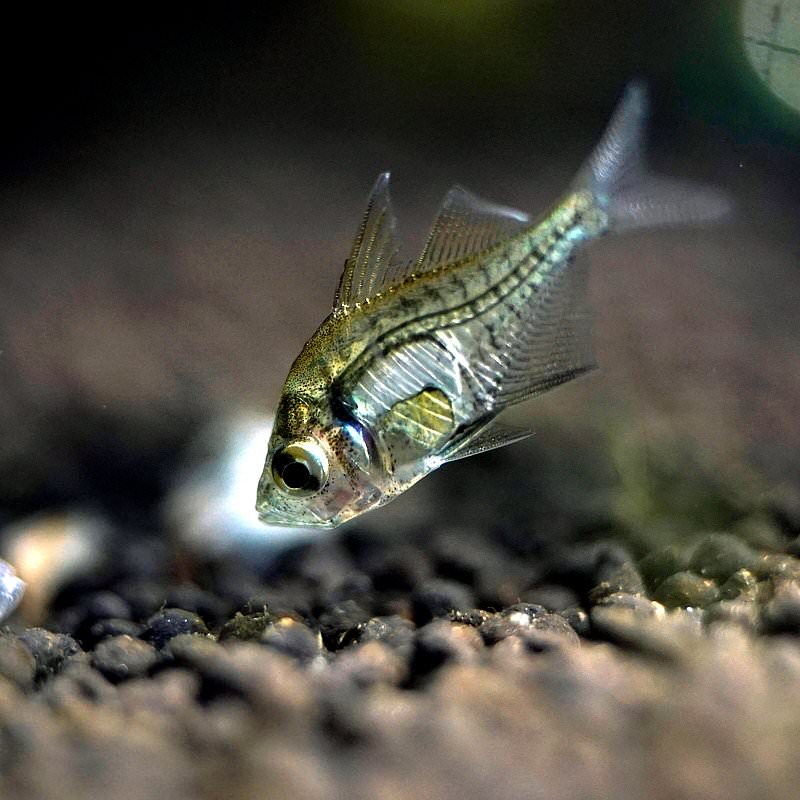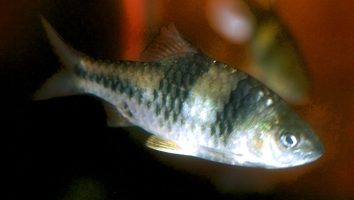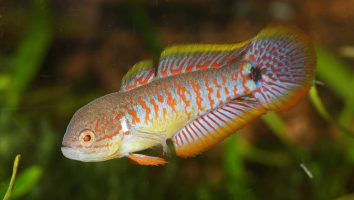The Indian glassy fish is an absolutely stunning freshwater fish that will add a lot of color and personality to your aquarium.
This species is native to India and Sri Lanka, and is a popular choice for fishkeepers due to their hardiness and bright colors.
However, glassy fish are not easy to find in pet stores. In fact, they’re actually quite rare.
But if you’re lucky enough to find one, this guide will teach you everything you need to know about Indian glassy fish care. You’ll learn about their diet, tank mates, size, and more!
Table of contents
Species overview
The Indian glassy fish (scientific name: Parambassis ranga) is a freshwater fish that’s native to India and Sri Lanka.
They’re found in a wide variety of habitats, but they prefer slow-moving waters with plenty of vegetation. This could be anything from ponds and lakes to rivers and streams.
One of the most notable things about glassy fish is their appearance. As you might’ve guessed from their name, they have a very translucent body. This is due to the fact that they have very few scales, which is something that’s fairly uncommon in the fish world.
Indian glassy fish are very popular in the aquarium trade. They’re relatively easy to care for and make a beautiful addition to any freshwater tank.
Appearance

The Indian glassy fish is a freshwater fish that is native to India. As the name suggests, these fish are very transparent. In fact, they’re almost completely see-through!
The only thing that isn’t transparent on these fish is their eyes and a few of the organs in their body. Other than that, you can see right through them.
These fish have a very unique body shape that is long and slender. They have a small mouth that is located at the end of a long snout.
The Indian glassy fish has a dorsal fin and an anal fin that are both located towards the back of their body. They also have a small caudal fin.
The Indian glassy fish is a very peaceful fish that is not aggressive towards other fish. They are a schooling fish and prefer to live in groups.
Lifespan
3 years
The Indian glassy fish is a small and delicate fish. It has a lifespan of 3 years, but it can live up to 5 years in captivity if well taken care of.
Size
Indian glassy fish only grow to be about 2.5 inches long.
Tank
Tank Size
The minimum tank size for glassy fish is 30 gallons. If you’re looking for a freshwater fish that can fit in an average-sized tank, this is not the fish for you.
If you want to keep two glassy fish in the same tank you’ll want to add at least another 30 gallons to that minimum number if you want them to thrive.
Another reason why you need to provide enough space is for the sake of enrichment and comfort. These fish like to roam and will often run gentle but steady laps around your tank. Giving them a little bit of extra space can go a long way in making sure they can comfortably turn around in the tank.
Water Parameters
The Indian glassy fish is a tropical freshwater species that prefers warm water with a neutral to slightly alkaline pH.
They’re found in slow-moving rivers and still lakes in their native India.
In the aquarium, they do best in a well-oxygenated tank with plenty of hiding places.
Here are some recommended water parameters for glassy fish.
- Water temperature: 72 to 82 degrees Fahrenheit
- pH levels: 6.8 to 7.6
- Water hardness: 5 to 15 dGH
- Alkalinity Levels: 6-12 dKH
What To Put In Their Tank
When it comes to setting up the interior of their tank, Indian glassy fish are not too picky. They prefer a sandy substrate, but they will do fine with gravel as well.
As for plants, they are not known to eat them so you can add whatever you want. We recommend something that will provide them with some cover though (like Hornwort or Java Moss).
These fish also like to have a few pieces of driftwood in their tank. This gives them something to hide behind and makes them feel more secure.
One last thing to keep in mind is that these fish are known to jump out of the water. It’s important to have a lid on their tank to prevent this from happening.
Common Diseases
Indian glassy fish are pretty hardy, but that doesn’t mean they don’t get sick from time to time. The most common disease that affects this species is ich.
Ich is a very common freshwater parasite that can result in some pretty nasty symptoms. The most obvious sign of ich is the presence of white spots on the body of your fish.
These spots can eventually lead to gill damage, difficulty breathing, and even death if left untreated.
Fortunately, ich is relatively easy to treat. There are a variety of products on the market that will help rid your fish of the parasite.
The best way to prevent ich (or any other disease) is to maintain clean and stable water conditions in your tank. This will make your fish much more resistant to disease and less likely to get sick in the first place.
Behavior & Temperament
Indian glassy fish tend to be peaceful and can get along with other fish that have a similar temperament. They’re not known to be aggressive, although they may nibble on the fins of other fish if they’re not given enough to eat.
These fish are relatively active and enjoy swimming around in groups. They’re not shy, so you’ll often see them out in the open.
Indian glassy fish are known to be good jumpers, so it’s important to have a lid on your tank. They’re also known to be escape artists, so make sure your tank is secure.
Tank Mates
Indian glassy fish are a peaceful and docile species. As a result, they can get along with most tank mates.
The only time you might have an issue is if you keep them with larger and more aggressive fish. These fish can be bullied and might not do well in a tank with fish that are too assertive.
Other than that, there are tons of compatible species. Here are some of the best Indian glassy fish tank mates:
- Neon Tetra
- Cardinal Tetra
- Ghost Shrimp
- Guppy
- Platy Fish
- Corydoras Catfish
- Otocinclus Catfish
- Cherry Shrimp
- Mollies
Breeding
The Indian glassy fish is a beautiful, peaceful, and popular aquarium fish. They’re not too difficult to care for, but their breeding process can be a bit challenging.
The first step is to set up a breeding tank. It should hold at least 20 gallons of water and have a sponge filter. The tank should also be dimly lit and have plenty of hiding places.
Next, you need to adjust the water parameters. The temperature should be between 77 and 86 degrees Fahrenheit. The pH should be between 6.5 and 7.5. The water hardness should be between 5 and 15 dGH.
Once the tank is set up, you can add the fish. You’ll need at least one male and two females. It’s best to have more females than males.
The next step is to condition the fish. Feed them live and frozen foods. You can also use high-quality pellets and flakes. This will help to bring the females into breeding condition.
When the females are ready, they will start to lay eggs. The males will then fertilize them. The eggs will be scattered all over the tank.
Once the eggs have been laid, remove the adults. The eggs will hatch in about 24 hours.
The fry will be very small, so you’ll need to feed them live foods. Baby brine shrimp and microscopic worms are both good options. You can also use a commercial fry food.
As the fry grow, you can start to introduce them to pellets and flakes.
Conclusion
Indian glassy fish are a great choice for beginner fishkeepers. They’re relatively hardy and can adapt to a wide range of water conditions.
They’re also very peaceful, so they’re a good choice if you want to add some color to your tank without worrying about aggression.
Overall, we think they’re a great choice for beginner aquarists or anyone who wants a low-maintenance fish.












